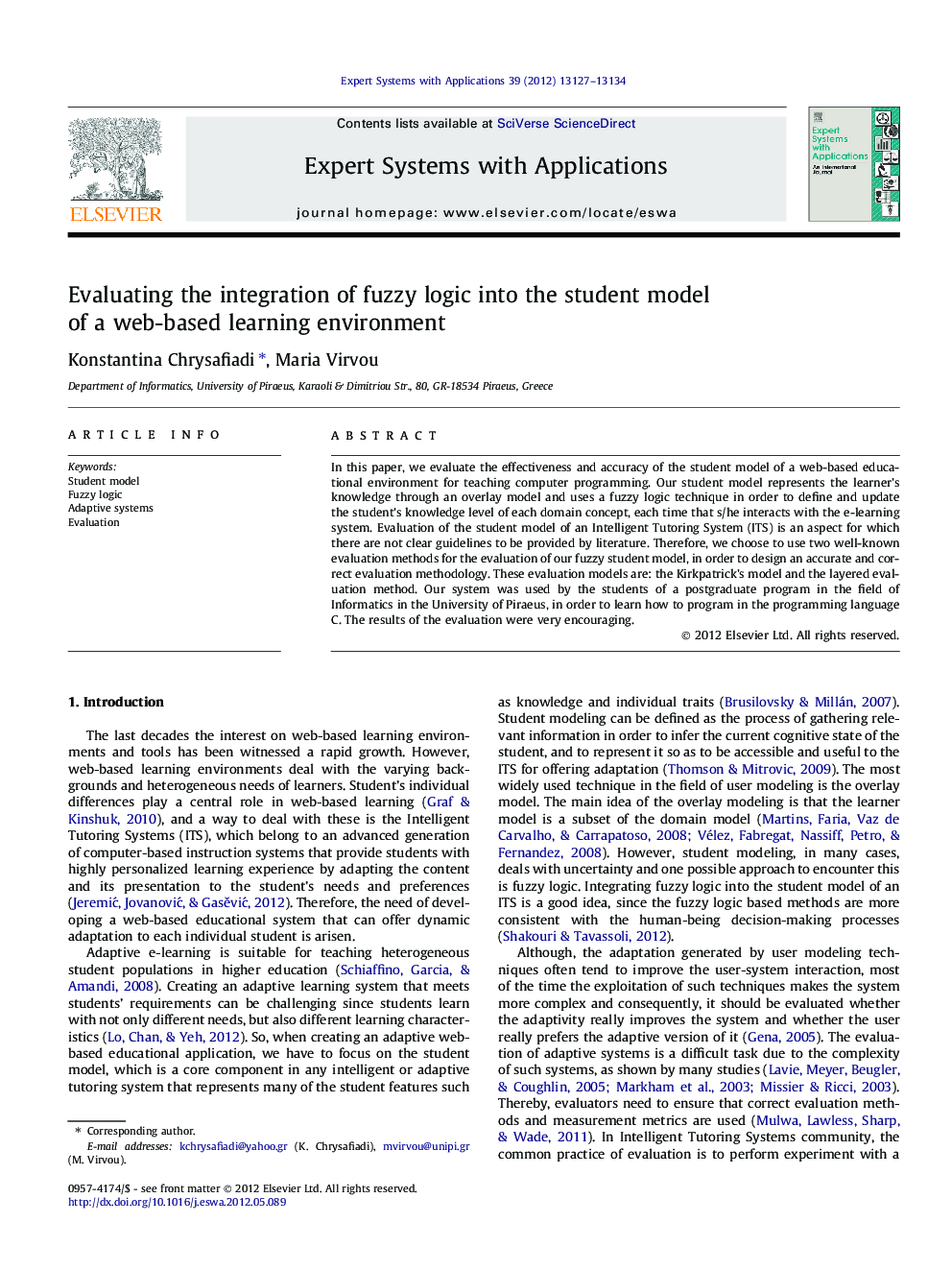| Article ID | Journal | Published Year | Pages | File Type |
|---|---|---|---|---|
| 383289 | Expert Systems with Applications | 2012 | 8 Pages |
In this paper, we evaluate the effectiveness and accuracy of the student model of a web-based educational environment for teaching computer programming. Our student model represents the learner’s knowledge through an overlay model and uses a fuzzy logic technique in order to define and update the student’s knowledge level of each domain concept, each time that s/he interacts with the e-learning system. Evaluation of the student model of an Intelligent Tutoring System (ITS) is an aspect for which there are not clear guidelines to be provided by literature. Therefore, we choose to use two well-known evaluation methods for the evaluation of our fuzzy student model, in order to design an accurate and correct evaluation methodology. These evaluation models are: the Kirkpatrick’s model and the layered evaluation method. Our system was used by the students of a postgraduate program in the field of Informatics in the University of Piraeus, in order to learn how to program in the programming language C. The results of the evaluation were very encouraging.
► We evaluate the integration of fuzzy logic into the student model. ► We use a combination of Kirkpatrick’s model with the layered evaluation framework. ► Fuzzy student model improves the learners’ satisfaction and performance. ► Fuzzy student model improves the adaptivity of the system. ► Fuzzy logic helps the system to make more valid and reliable decisions.
